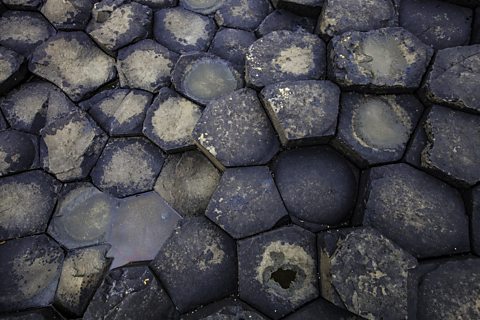What is geology?
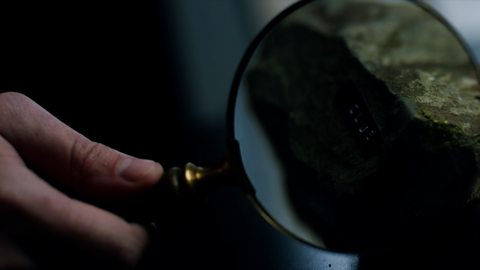
- A branch of science that is concerned with the EarthŌĆÖs physical structure and substance, as well as how it has and continues to form and react.
- A bit like history but instead of looking at old documents, geologists look at rocks in order to understand the EarthŌĆÖs development since its formation.
- ŌĆśGeoŌĆÖ means earth and ŌĆślogyŌĆÖ denotes study or interest, so, in a way, we can call geology earthstudy.
- ItŌĆÖs not just about looking at rocks - it includes the study of organisms that have inhabited our planet.

Why is it important that we study geology?
It is important that we investigate how EarthŌĆÖs materials, structures, processes and organisms have changed over time. Understanding EarthŌĆÖs past climates can provide invaluable knowledge in the fight against climate change. Geological study can also predict what EarthŌĆÖs processes will do next: landslides, earthquakes, floods and volcanic eruptions.
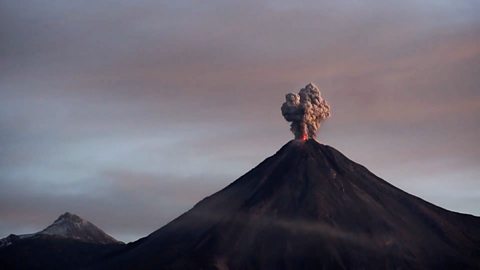
Volcanic landforms in Northern Ireland
Sixty million years ago, huge volcanic eruptions formed the incredible landscape of northeast Antrim which tourists come a long way to see.
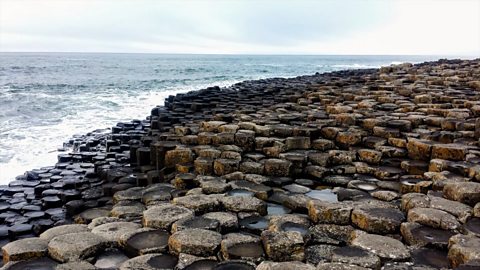
DonŌĆÖt worry! We donŌĆÖt need to study volcanic landforms to predict possible eruptions here in Northern Ireland. Well, at least not anymore, as it was 60 million years ago that this land mass was a volcano!
North-east Antrim was part of a mountain chain bigger than the Himalayas which cracked open and caused volcanic eruptions everywhere. The Glens of Antrim would not exist without huge plugs of molten rock soaring into the air. Mile-wide, white-hot volcanic vents ripped through the rocks giving us coastal cliff faces such as Carrick-a-Rede.
Some our most wonderful and unique beauty spots exist because of natural occurrences in EarthŌĆÖs processes. In the same eruption, the lava lakes cooled slowly and evenly, forming regular columns of basalt. Sound familiar? The hexagonal columns are what we now call now the GiantŌĆÖs Causeway, a UNESCO World Heritage site receiving around one million visitors a year.

What can rock tell us?

Some inquisitive geologists started asking questions about our granite and basalt rocks. Both are igneous. The word igneous comes from the Latin for fire ŌĆśi▓Ą▓įŠ▒▓§ŌĆÖ. This gives us a clue as to their formation because they are the result of massive volcanic activity millions of years ago.
Basalt is dark in colour, and when rubbed, a dusty powder may come off on the fingers. If youŌĆÖre lucky, you might find some fossils in basalt rocks. And as you might suspect, thereŌĆÖs a lot of basalt in Co. Antrim.
Granite may be a number of colours, mostly red or brown. This type of rock is composed of sand-sized grains which, like basalt, may come off when rubbed with hands. Granite can be found in the Mourne Mountains.
Around 56 million years ago, the granite formed when thick and sticky magma slowly cooled and crystallised before it reached the EarthŌĆÖs surface. Granite is made up mostly of three minerals - quartz, feldspar and pale mica - thatŌĆÖs why granite has patches of colour.
The word ŌĆśgraniteŌĆÖ comes from the Latin ŌĆśg░∙▓╣▓į│▄│ŠŌĆÖ meaning grain. Granite induced the EarthŌĆÖs crust and it wasnŌĆÖt until after the glacial periods that the rock was exposed. For centuries, people have been using granite as a resource.

Volcanic landforms in the rest of the world
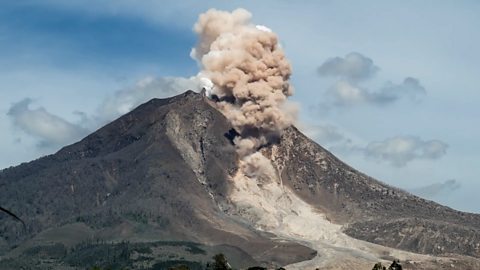
Without volcanoes much of the worldŌĆÖs surface would not exist. Volcanoes have created more than 80 percent of EarthŌĆÖs land mass. As well as laying the foundation for life and humans to evolve, they have crafted mountains we trek and climb and their explosive force has developed world wonders such as the Grand Canyon.
We may think that lava causes untold destruction, but this isnŌĆÖt always true. Over time, the natural elements of the weather system break down the volcanic rocks caused by lava rivers, freeing nutrients from the rocks and creating fertile soils that many societies from across the world have benefitted from.
Volcano types
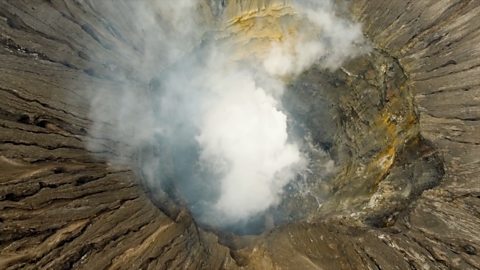
There are active and extinct volcanoes all around the world. Most volcanoes are inactive and do not threaten nearby communities and populations - however some are active and are a threat to life. The three types of volcano are:
- Active To be active it has had to have had at least one eruption during the past 10,000 years.
- Dormant A volcano is dormant when it is not erupting but is expected to erupt again.
- Extinct It must not have had an eruption for at least 10,000 years and is not expected to erupt again for the foreseeable future.

Volcanic eruptions
There are many different types of volcanic eruptions. Depending on the eruption, it can determine how a volcano is categorised. Two broad categories of eruption, effusive and explosive, can describe the habits of a particular volcano.
- Effusive eruptions involve the outpouring of basaltic lava that flows quite easily and produces little gas.
- Explosive eruptions contain lava that is thicker and therefore does not flow as easy and produces a lot more gas - the lava often has a high-speed flow caused by explosive gas during an eruption.
Within these two broad categories of eruption, there are six different types based on character of eruption, volcanic activity and volcanic areas:
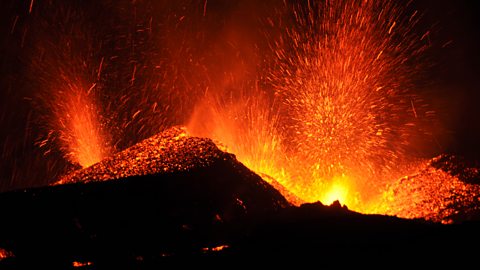
Image caption, Icelandic
Icelandic eruptions have effusive habits of lava flow, which tend to build lava plateaus. (Picture: volcanic eruption of Eyjafjallaj├Čkull in Iceland in 2010)
Image caption, Hawaiian
Similar to Icelandic eruptions but the lava flows with more fluidity, creating large and gentle slopes called shield volcanoes. They get their name because they are characteristic of Hawaiian volcanoes. (Picture: close up of Kilauea Volcano, Hawaii Volcanoes National Park)
Image caption, Strombolian
Named for the Stromboli volcano on Stromboli island off ItalyŌĆÖs northeast coast, this eruption involves moderate bursts of expanding gases that eject clots of lava in small continuous eruptions. (Picture: night eruption at Stromboli volcano, 2008)
Image caption, Vulcanian
Erupts moderate explosions of gas with volcanic ash, which creates dark clouds in the skies above. Named after Vulcano island off the coast of Italy. (Picture: Vulcano Island seen from the sea, Sicily)
Image caption, Pelean
Called after the eruption of Mount Pel├®e on the Martinique, this type of eruption has an explosive outburst that generates high-speed flows and dense mixtures of hot fragments of lava and gas, which can be extremely destructive and threaten nearby places. (Picture: Mount Pel├®e in Saint-Pierre, Martinique)
Image caption, Plinian
The most deadly and violent eruption, it blasts volcanic material continuously for hours directly into the sky, resembling a gigantic rocket blast. Named for Pliny the Younger who recorded the eruption of Vesuvius in 79 AD. (Picture: ruins of Pompeii with Mount Vesuvius in the background)
1 of 6
Test yourself
More on Rocks
Find out more by working through a topic
- count1 of 3
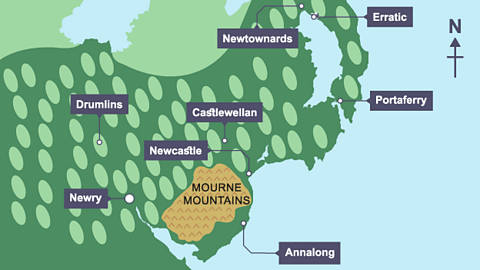
- count2 of 3
